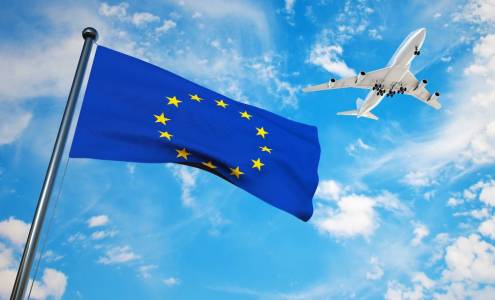New EU travel rules
Updated 24 September 2025
The European Union is introducing two important changes for travel to Europe. These are:
- EU Entry/Exit System (EES)
- European Travel Information and Authorisation System (ETIAS)
The EU has confirmed EES will start on 12 October 2025. It will be introduced in phases, building towards being fully operational by 10 April 2026.
You won’t need an ETIAS for travel this year. The EU is looking to introduce ETIAS towards the end of 2026.
EU Entry/Exit Scheme (EES)
The EU Entry/Exit system is a new electronic system that will replace the physical stamping of passports when you go through passport control when arriving in and departing from your destination. It will register all entries and exits to and from the participating European countries, which basically means it will register your movements every time you cross a border in or out of the EU/Schengen area.
Once the new system is live, when you go through passport control on your arrival to, and departure from your destination, as well as providing your passport you will also need to have a photo of your face taken, and your fingerprints scanned.
When will it apply?
The EU has confirmed EES will start on 12 October 2025. It will be introduced in phases, building towards being fully operational by 10 April 2026.
Who will it apply to?
It will apply to those travelling for a short stay, from what the EU call a ‘third country’. This is people who are not an EU citizen or a citizen of the Schengen area. So it will apply to most people travelling from the UK.
A short stay refers to visits, holidays or business trips that have a duration of up to 90 days and are taken within a 180 day period. The vast majority of travel between the UK and Europe will be classed as a short stay.
Irish passport holders are exempt from EES. If you are a British passport holder but have EU residency, you are also exempt from EES.
People of all ages will need to go through the EES checks, however children under 12 will not need to provide fingerprints but they will need to have a facial scan taken.
Which countries will it apply to?
When EES comes in, these are the countries that will be using it:
| Austria | Estonia | Iceland | Malta | Slovakia |
| Belgium | Finland | Italy | Netherlands | Slovenia |
| Bulgaria | France | Latvia | Norway | Spain |
| Croatia | Germany | Liechtenstein | Poland | Sweden |
| Czech Republic | Greece | Lithuania | Portugal | Switzerland |
| Denmark | Hungary | Luxembourg | Romania |
In Cyprus and Ireland, despite being countries of the European Union, passports are still stamped manually.How it will be phased in
EES will be introduced in phases from 12 October, meaning your experience of it after it goes live will vary depending on where you are travelling to. This is a summary of the phases:
How will it be phased in:
- 12 October launch: At least one border point in each country should operate the new system, increasing to 10% of border points after the first 60 days.
- December 2025: Borders operating EES start to take biometric checks (facial scan and/or fingerprints).
- January 2026: Half of border points should be operating EES, with at least a third of passengers going through the system.
- March 2026: All borders are operating EES and taking biometrics, processing at least half of passengers through the system.
- 10 April 2026: System fully live, with all borders processing all passengers through EES, and taking biometrics.
![]()







